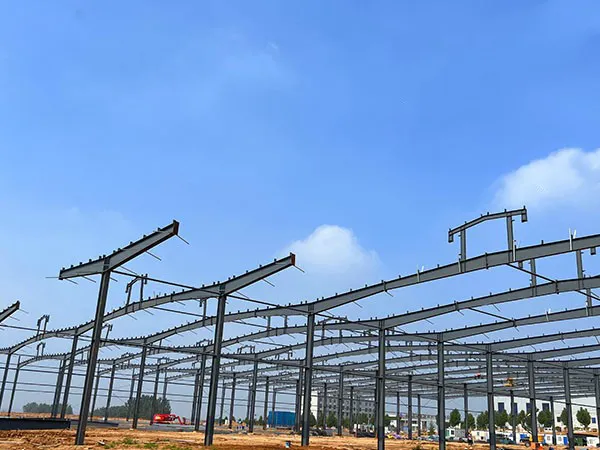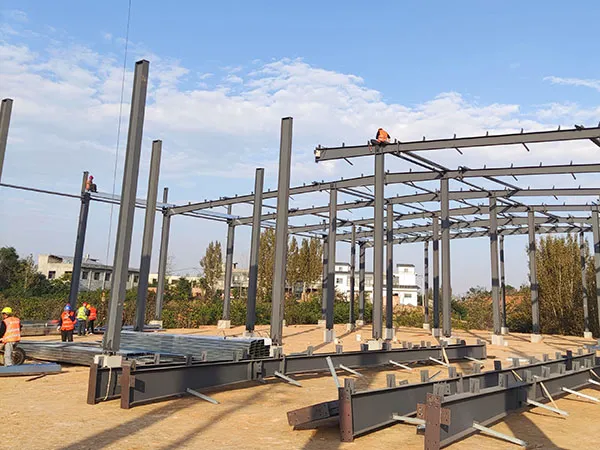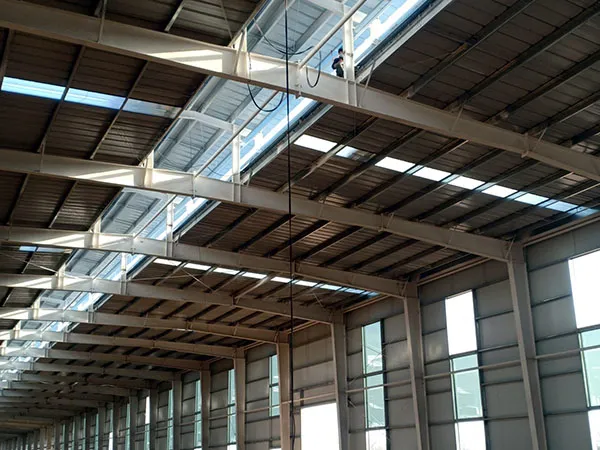Time:2025-08-25 02:15:14 Source:Sanjian Meichen Steel Structure
In modern architecture, steel structures are transforming city skylines and industrial landscapes at an unprecedented pace. More than just a building material, they are a building solution that combines efficiency, environmental friendliness, and innovation. Meichen Steel Structure, as an industry pioneer, is committed to uncovering the unlimited potential of steel structures.
Steel structure buildings have become a dominant choice in modern construction for a wide range of projects, from skyscrapers and industrial warehouses to residential homes. Their popularity stems from a powerful combination of advantages.
A steel structure refers to a building system that uses steel as its primary load-bearing components, including steel beams, columns, and trusses. Compared to traditional concrete structures, steel structures, with their unique physical and mechanical properties, offer overwhelming advantages in engineering design, construction speed, environmental performance, and economic efficiency. Across the globe, steel structures play a central role in everything from towering skyscrapers to vast industrial plants and exquisite commercial buildings.

High strength and light weight: Steel's tensile strength and yield point are significantly higher than those of concrete. This means that, for the same load, steel structural components can have smaller cross-sectional dimensions and lower weight. For example, a steel beam with the same load-bearing capacity may weigh only one-third to one-fifth as a concrete beam.
Long spans and open spaces: The combination of light weight and high strength makes steel structures easily capable of creating long-span, column-free spaces. This is particularly critical in stadiums, exhibition centers, hangars, and large industrial plants, providing significant flexibility in functional layout.
Industrial prefabrication: Steel structural components are mostly standardized and manufactured in factories, ensuring high precision and controlled quality.
Quick on-site assembly: Once delivered to the site, components are assembled simply by bolting or welding, significantly reducing on-site wet work and shortening the construction period. For example, the construction period for a medium-sized steel-structured factory building can be 20%-30% shorter than that of a concrete building of the same size. This means that companies can start production faster and reduce capital costs.
Good ductility: Steel possesses excellent ductility, allowing it to absorb and dissipate seismic energy through deformation under seismic loads, preventing sudden brittle failure.
Lightweight: The building's low weight effectively reduces seismic inertia, thereby lowering the risk of damage during an earthquake. This is a key reason why steel structures are so popular in high-intensity seismic zones.
Environmentally friendly and sustainable, embracing the concept of green building
Recyclable materials: Steel is a 100% recyclable and reusable green material, enabling resource recycling even after the building's lifecycle, significantly reducing construction waste.
Energy conservation and emission reduction: Steel structures generate less noise and dust on construction sites, reducing environmental pollution. Furthermore, their lightweight nature helps reduce foundation work.

Versatile shapes: Steel can be easily processed into a variety of complex shapes, providing architects with ample design freedom. Whether it's streamlined or custom-shaped structures, or high-rise or super-tall buildings, they can all be perfectly realized.
Easy to renovate and expand: Steel structures are more convenient and economical to retrofit, add floors, or expand later compared to concrete structures.
Corrosion protection: Modern steel structures are often treated with a professional anti-corrosion coating to maintain their structural integrity even in harsh environments.
Maintenance: Regular inspection and maintenance are relatively simple, effectively extending the building's lifespan.
Wide column spacing: Reduces the number of internal support columns, providing greater usable floor area.
Small cross-section: Compared to concrete, steel columns and beams have smaller cross-sections, minimizing internal space consumption and increasing the building's floor space ratio.

Steel structures, with their unparalleled advantages, are widely used in various fields:
Industrial Buildings: Factories, warehouses, logistics centers, hangars, etc., particularly suited to large spans and high headroom requirements.
Commercial Buildings: Shopping malls, convention centers, stadiums, office buildings, hotels, etc., requiring rapid construction and unique design.
Public Buildings: Stations, airport terminals, hospitals, schools, etc., emphasizing safety and functionality.
High-Rise and Super-High-Rise Buildings: Resisting wind loads and seismic forces, achieving greater heights.
Bridges and Infrastructure: Long-span bridges, TV towers, transmission towers, etc.
Residential Buildings: Lightweight steel villas and multi-story residential buildings, enabling industrialized construction and personalized customization.
Choosing steel structure means choosing an efficient, reliable, and sustainable future. Leveraging years of industry experience and expertise, Meichen Steel Structure offers:
Customized Design: Tailoring the optimal and most cost-effective steel structure solution to your specific needs. High-Quality Manufacturing: Advanced production equipment and a strict quality control system ensure the precision and reliability of every component.
Professional Installation: Our experienced construction team ensures efficient, safe, and on-time project delivery.
Full-Service: We provide one-stop services from project consultation, design, manufacturing, installation, and ongoing maintenance.
Contact Meichen Steel Structure today to start your next-generation building project!